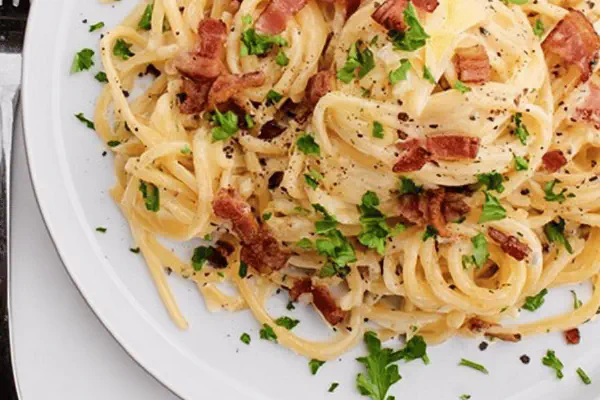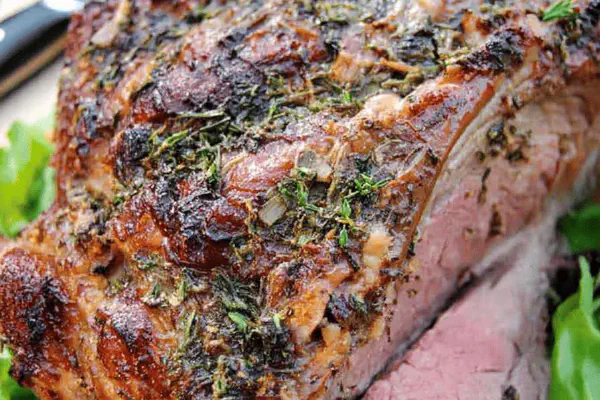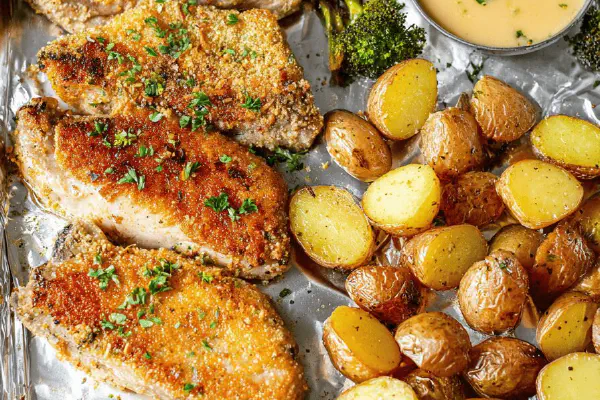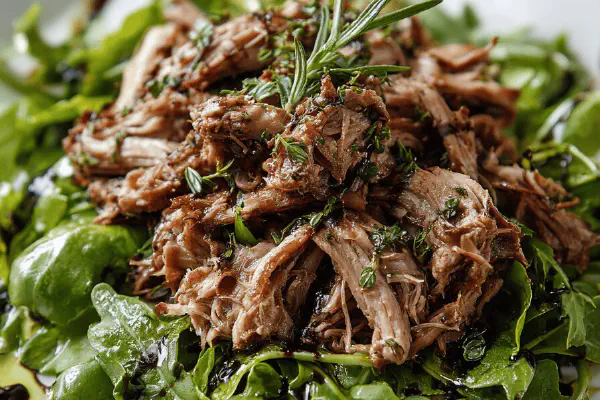Pork Filets with Mango Chutney
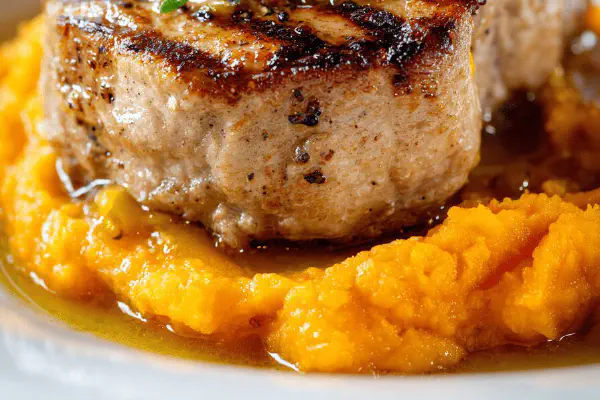
By Emma
Certified Culinary Professional
Ingredients
- light dusting of all-purpose flour or chickpea flour
- 2 pork filets, trimmed
- 25 ml (1 1/2 tbsp) unsalted butter
- 20 ml (1 1/3 tbsp) vegetable oil
- 270 ml (1 1/8 cup) chunky mango chutney, store-bought or homemade
- 220 ml (7 1/2 fl oz) fresh orange juice, strained
- 1 garlic clove, minced finely
- 1 small rosemary sprig
- salt and freshly ground black pepper
About the ingredients
Method
- Preheat oven to 175 °C (347 °F).
- Pat pork filets dry. Lightly dust all sides with flour if surface sticky; prevents soggy crust.
- Heat butter and oil over medium-high in ovenproof skillet. Wait for fat to shimmer; avoid burning butter.
- Sear pork until golden on all sides, about 2-3 minutes per side. Look for crust development and rattling sizzle.
- Add garlic, rosemary, chutney, orange juice. Stir gently to deglaze pan, scraping fond with wooden spoon.
- Bring sauce to lively boil, bubbling and thickening slightly.
- Transfer skillet to oven; cook 18-22 minutes. Look for flesh turning opaque but still pinkish inside. Use finger press; firm but springy signals done.
- Remove from oven and let rest 7 minutes under tented foil; juices redistribute for tender bite.
- Slice pork medallions crosswise. Spoon chutney sauce over; serve alongside mashed potatoes or roasted sweet potatoes for earthiness.
Cooking tips
Chef's notes
- 💡 Flour dusting key. Keeps surface dry; crust forms faster. Chickpea flour option for gluten-free adds subtle nutty notes. Don’t skip drying meat thoroughly first; sticky surface ruins crust attempt.
- 💡 Butter and oil combo? Careful heating important. Butter foams, then calms—time to add pork before burnt taste. Too much butter, you black pan. Oil alone? Flavor less rich. Balance like I learned over trials.
- 💡 Searing sounds guide you: Listen for sizzle, crust forming. 2-3 minutes per side generally, thicker cuts longer. Dark golden color okay but no black char. Flip gently; metal spatula can tear medallions.
- 💡 Sauce bubbling but gentle boil needed to thicken. Furious boil toughens meat, breaks sauce texture. Scrape fond well with wooden spoon. Aroma shifts from sharp garlic spice to mellow fruity-herb mix—watch and smell closely.
- 💡 Resting pork under foil crucial. Juices redistribute, fibers relax. Skip rest and juices run out on slicing—dry bites. Rest 7 minutes enough; don’t overdo or cool too much. Slice slightly across grain for tender mouthfeel.
Common questions
Can I substitute chutney?
Apricot preserves with chili flakes can work. Pineapple ginger mix too, if you want tropical spin. Texture varies though, adjust liquid accordingly. Store-bought chutney sweetness varies vastly–taste early.
What if no ovenproof skillet?
Transfer seared pork and sauce to baking dish. Scrape pan fond carefully to retain flavor. Use foil on dish if no lid. Oven time stable but watch internal temp to avoid dry meat.
How to tell doneness without thermometer?
Finger press test works. Firm but springy feel signals medium with pinkish center. Scent also shifts. Listen for sauce bubbling changes. Avoid stabbing; juices leak and dry meat.
How to store leftovers?
Cool quickly, cover airtight. Refrigerate 3-4 days max. Reheat gently in skillet or oven to preserve texture. Sauce thickens cold; add splash orange juice or water to loosen if needed.
